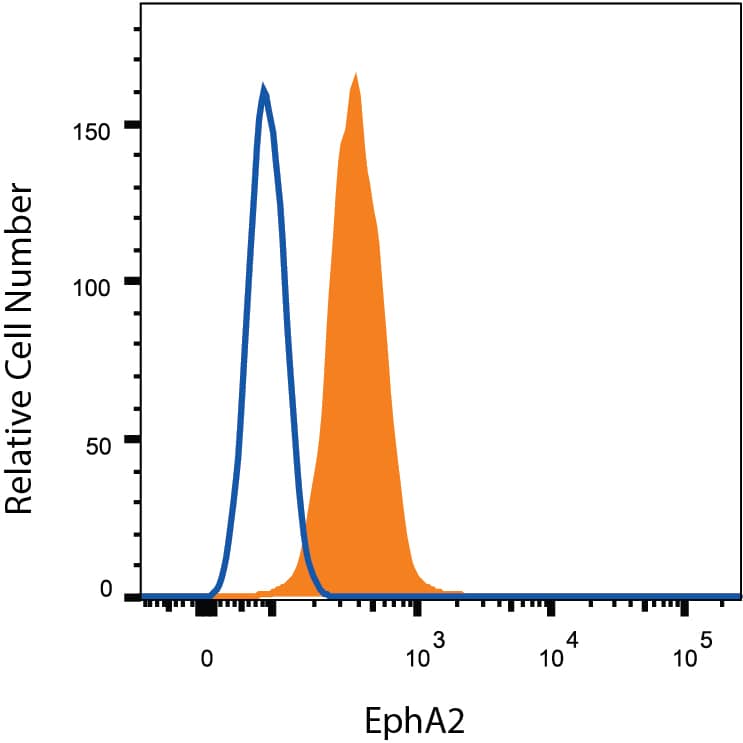Mouse EphA2 PE-conjugated Antibody
R&D Systems, part of Bio-Techne | Catalog # FAB639P


Key Product Details
Species Reactivity
Validated:
Cited:
Applications
Validated:
Cited:
Label
Antibody Source
Product Specifications
Immunogen
Ala22-Ala535 (predicted)
Accession # AAA82113
Specificity
Clonality
Host
Isotype
Scientific Data Images for Mouse EphA2 PE-conjugated Antibody
Detection of EphA2 in MS-1 Mouse Cell Line by Flow Cytometry.
MS-1 mouse pancreatic islet endothelial cell line was stained with Rat Anti-Mouse EphA2 PE-conjugated Monoclonal Antibody (Catalog # FAB639P, filled histogram) or isotype control antibody (Catalog # IC013P, open histogram). View our protocol for Staining Membrane-associated Proteins.Applications for Mouse EphA2 PE-conjugated Antibody
Flow Cytometry
Sample: MS‑1 mouse pancreatic islet endothelial cell line
Formulation, Preparation, and Storage
Purification
Formulation
Shipping
Stability & Storage
- 12 months from date of receipt, 2 to 8 °C as supplied.
Background: EphA2
EphA2, also known as Eck, Myk2, and Sek2 (1), is a member of the Eph receptor family which binds members of the ephrin ligand family. There are two classes of receptors, designated A and B. Both the A and B class receptors have an extracellular region consisting of a globular domain, a cysteine-rich domain, and two fibronectin type III domains. This is followed by the transmembrane region and cytoplasmic region. The cytoplasmic region contains a juxtamembrane motif with two tyrosine residues, which are the major autophosphorylation sites, a kinase domain, and a conserved sterile alpha motif (SAM) in the carboxy tail which contains one conserved tyrosine residue. Activation of kinase activity occurs after ligand recognition and binding. EphA2 has been shown to bind ephrin-A3, ephrin-A1, ephrin-A5, ephrin-A4, and ephrin-A2 (2, 3). The extracellular domains of mouse and human EphA2 share greater than 92% amino acid identity. Only membrane-bound or Fc-clustered ligands are capable of activating the receptor in vitro. While soluble monomeric ligands bind the receptor, they do not induce receptor autophosphorylation and activation (2). In vivo, the ligands and receptors display reciprocal expression (3). It has been found that nearly all receptors and ligands are expressed in developing and adult neural tissue (3). The Eph/ephrin families also appear to play a role in angiogenesis (3).
References
- Eph Nomenclature Committee [letter] (1997) Cell 90:403.
- Flanagan, J.G. and P. Vanderhaegen (1998) Annu. Rev. Neurosci. 21:309.
- Pasquale, E.B. (1997) Curr. Opin. Cell. Biol. 9:608.
Alternate Names
Gene Symbol
UniProt
Additional EphA2 Products
Product Documents for Mouse EphA2 PE-conjugated Antibody
Product Specific Notices for Mouse EphA2 PE-conjugated Antibody
For research use only